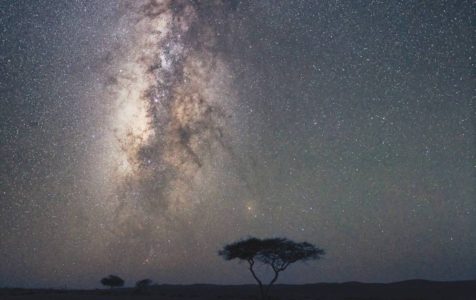If you’re the type of person who loves to spot constellations in the night sky or maybe one that wakes up to catch the sunrise, then astrotourism is for you. If you are also an avid shutterbug, then there is nothing like it.
Astrotourism is not just stargazing in your back garden or from the balcony. It involves traveling to places where you can see the night sky in full glory. It will teach us that our world is a tiny speck in the universe. It is eco-friendly, naturally socially distanced, and can be done anywhere globally, though inevitably it is best in the great outdoors where the light pollution of cities doesn’t obscure the stars.
The pandemic has seen an even greater interest in the night sky, in part because for many of us who have been stuck inside our homes or with little access to the outdoors; the sky has provided the only limitless sense of space.
Oman’s Jabal Akhdhar, Jabal Shams, Jabal Sifa, Masirah Island, Al Ashkharah, Rimal Al Sharqiya, and Rub Al Khali offer a lot of potential for astrotourism, especially in winter when you can enjoy a barbecue and grilled food with family or friends in the background of starry skies. We’ve found an interview with David Dillon Goss, a Muscat-based South African photographer who aims to promote astrotourism in the Sultanate.

David who first came to Oman in 2019 spends most of his free time in remote wilayats in search of pollution-free dark skies to capture its brilliance with his camera.
“It is up to the individual whether they want to use a star tracker or not. For deep space photography of Galaxies and Nebulae, a star tracker is required.”
David plans his trips to remote places well in advance by observing when the new moon appears. It is best to take astrophotos when there is no moon and use PhotoPills, an application to plan his trips. Weather also plays a big role because cloud cover prevents clear photos, and strong wind moves the tripod, resulting in blurred images. The best conditions are two days before and after the new moon, in areas with no light pollution and no wind. Humidity also affects the image by clouding the lens, he said.
David takes Omani guides whenever he travels to remote locations. Rashid al Hajri (@alshagy1986) often drives with him through Bidiya sand dunes. Rashid is an expert in navigating safely at night through desolate dunes, vast beaches, and high mountain passes. In his quest to promote Oman astrotourism, David plans to host a photo expo in Muscat where international astrophotographers will be invited to showcase their photographs.
David, who is also an avid fisherman, works with Singapore-based, ‘I Can Read’ brand for the Middle East and North Africa in Oman. Follow David at Instagram.



